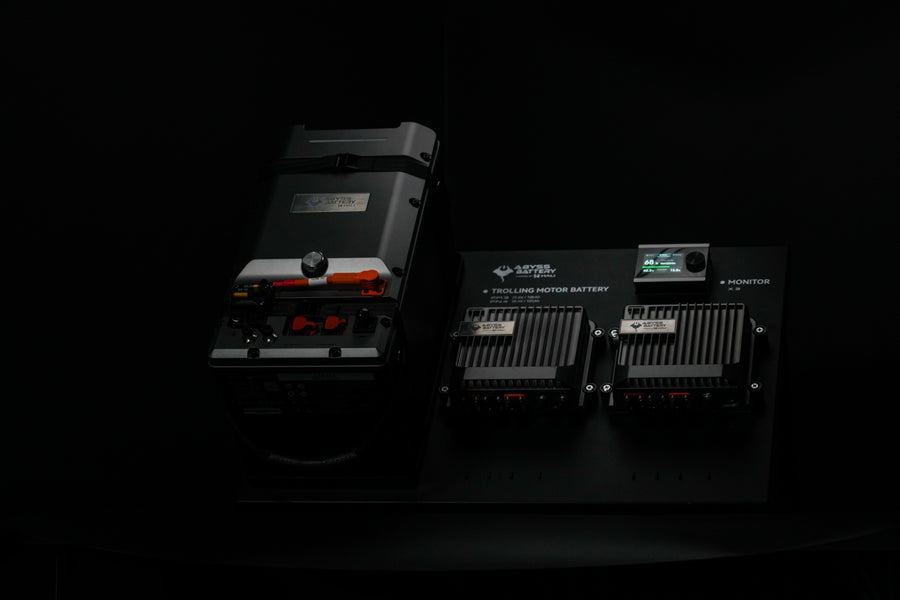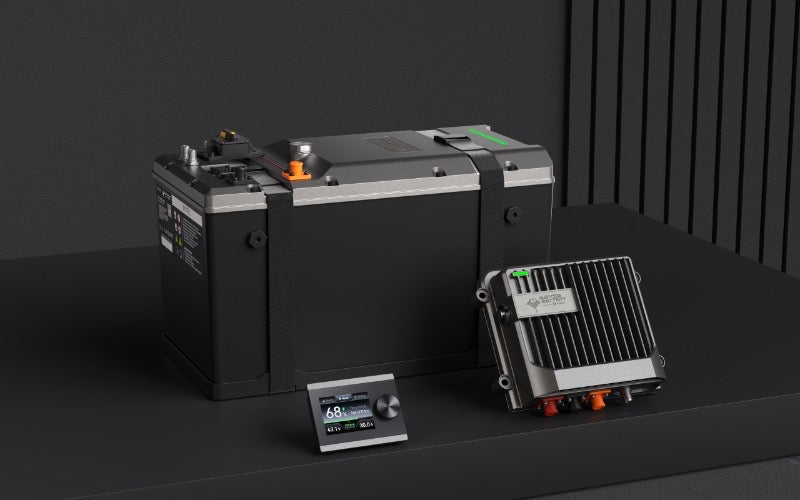The Ultimate Guide to Marine Lithium Battery Maintenance

Every year, marine lithium-ion batteries seem to become more commonplace as more boat owners discover the many advantages these batteries have to offer. But lithium batteries are different than typical lead-acid units—so we’ve compiled a helpful guide on marine lithium batteries and their maintenance. Keep reading to learn more!
What Are Marine Lithium Batteries?
For years, the most dominant battery unit for maritime vessels of all kinds was the standard lead-acid battery. But recently, lithium-ion batteries have become much more prevalent among boaters and are quickly becoming the favored choice for boat owners. A lithium battery is different than the typical lead-acid unit that has been most common in boats for decades and offers many valuable advantages over its counterparts.
The Basic Benefits of Marine Lithium Batteries
They’re Lighter
One of the most significant benefits that marine lithium batteries afford boat owners over lead-acid units is their weight. A lithium battery, on average, is about 70 percent lighter than a standard lead-acid battery unit.
Obviously, when piloting a vessel on the water, it’s always better to be a little lighter! Lithium batteries are especially favored by sailboat owners who want to make their vessels as lean and mean as possible.
They Last Longer
Lithium batteries are also much more durable and can last longer than standard lead-acid units. In general, a lithium-ion battery can last up to ten times longer than a standard battery—which means one lithium unit can last as long as multiple new lead-acid batteries.
Typically, a lead-acid marine battery has about 500 charge-discharge cycles in its lifespan (meaning it can discharge its power storage and recharge multiple times before its components wear out). A lithium-ion battery, meanwhile, has as many as 5,000 cycles to offer boat owners.
They Offer Greater Power Storage
Anyone who has owned a boat with a lead-acid battery knows that once the unit discharges about 50 percent of its capacity, it can start to lose power and require immediate charging. Lithium batteries, on the other hand, have much more power storage and can discharge much more of their capacity without losing capability.
Most lithium batteries can discharge up to 80 percent of their capacity without any danger of over-discharge—some can discharge 100 percent without severe consequences! The enhanced storage also means owners can utilize fewer lithium batteries than lead-acid ones, meaning fewer battery units on board and even less weight.
Tips for Maintaining Marine Lithium Batteries
While marine lithium batteries are extremely capable and durable, they still need proper maintenance to function correctly. So, we’ve compiled some helpful tips for boat owners to keep their lithium batteries in top shape.
Certify Connections Are Clean & Stable
A lithium battery isn’t worth much if its cables and connections are incorrect or fraying. Ideally, the lithium battery will be mounted and installed in a vessel by a professional—but if you do it yourself, read the instructions carefully and consult the American Boat and Yacht Council (ABYC) guidelines for lithium batteries.
If you ever feel that you’re not technically proficient in mounting and installing your new lithium-ion marine battery, seek the help of a professional instead of risking an insecure connection. Once installed, check the ports and connections regularly to ensure they’re clean and stable.
Ensure Sufficient Ventilation for Battery Compartment
While lithium batteries are more stable than lead-acid units to the point that they rarely emit gasses and fumes, ventilation is still crucial on a vessel. If a lithium battery leaks gas or fumes, it could easily cause an intense and potentially disastrous fire on board.
If you think you smell fumes from your lithium battery, it’s likely the consequence of a more significant problem or failure with the battery unit. Immediately have a professional examine the battery before you accidentally run the risk of using a potentially leaking lithium unit.
Keep Them Out of the Heat
As with all batteries, overheating is a significant cause for concern. While lithium batteries are more heat-resistant than lead-acid units, they can still overheat if left in hot and strenuous conditions.
You should never leave a lithium battery out in the sun on a hot day—especially when it’s charging. When done charging, give it a few minutes to rest and cool down before using it to keep it from overheating.
Don’t Let Them Freeze
The cold is another potential danger to lithium batteries. While freezing temperatures aren’t typically a problem for marine batteries on the water, if you plan on storing a boat in the winter, you shouldn’t leave it out in the cold.
For long-term storage of lithium batteries, you should disconnect them from the vessel and store them in a more comfortable and warm storage place where the temperature stays above freezing.
Tips for Charging Marine Lithium Batteries
Use the Right Charger
It may seem obvious, but you’d be surprised how often boat owners make this simple mistake with their lithium batteries. While it’s not the end of the world to use a regular charger for a lithium battery, a charger specifically designed for lithium batteries is always the better option.
Lithium batteries will charge faster with a lithium charger than a standard one—saving you many hours over the unit’s lifespan.
Pro Tip: If you’ve got multiple lithium batteries, consider a bank charger that allows you to charge multiple batteries simultaneously instead of one at a time.
Don’t Overcharge
One common mistake many boat owners make with lithium batteries is charging them too long. Most lithium-ion batteries come with a battery management system that monitors the unit’s state of charge and can turn off when the limit is reached—but boat owners shouldn’t assume the monitor will always work on its own.
If charging for many hours, diligently check the lithium charger and its state and remove the battery when it reaches about 80 percent of its charge. If a lithium battery overcharges, it can create unstable and dangerous conditions that reduce its storage capability and lifespan.
Charge in Comfortable Conditions
As we’ve mentioned, lithium batteries don’t like to be too hot or cold, so when charging the units, ensure the conditions are moderate and comfortable. When it’s hot outside, bring the charger indoors to a more climate-controlled environment and away from the sun.
The same goes if you’re charging a battery in the winter. Ideally, you should never charge a lithium battery in cold or freezing conditions.
We hope our ultimate guide for lithium marine battery maintenance has been enlightening! If you have any questions about the lithium-ion boat battery and its care, or other lithium marine battery questions—don’t hesitate to contact our expert staff at Abyss Battery!





LiFePO4 battery cells
i live in central Illinois. my boat is a unheated shed. do i need to bring my batteries in out of the cold in the winter?
I’m thankful you advised us to use chargers that are specifically designed for lithium batteries if we want them to charge faster and avoid compromising their lifespans. I recently took an interest in fishing as a hobby, so I invested in a secondhand fishing boat. I’ll make sure to keep this in mind from now on while I get a new battery for my boat soon. http://batteryxchange.com/applications/marine-application/
Leave a comment